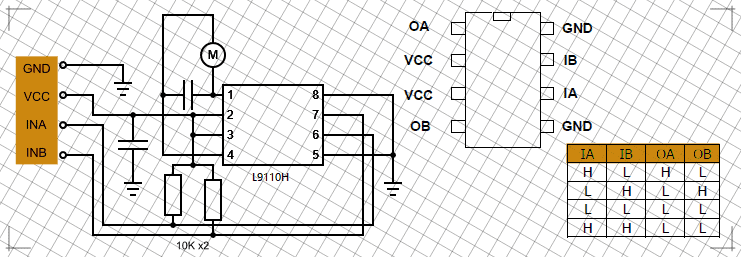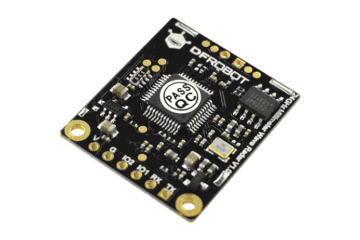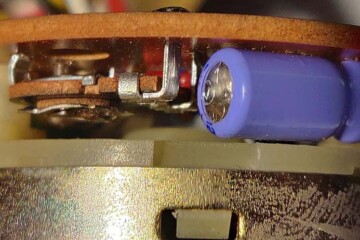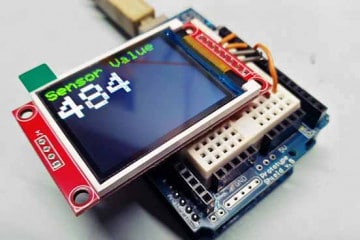The most popular, cheap fan motor module that’s available on Chinese webstores is the L9110 Fan Motor Module. At some webstores you can see this module is listed as a “Fan Module with Propeller and L9110 Driver” or “L9110 Fire Extinguishing Module”.
The fan motor module uses the L9110H dc motor driver IC to control the forward and reverse rotation of the propeller, and as advertised, it can easily blow out the fire of a candle 200mm away. Recommended working voltage of the module is 5V.
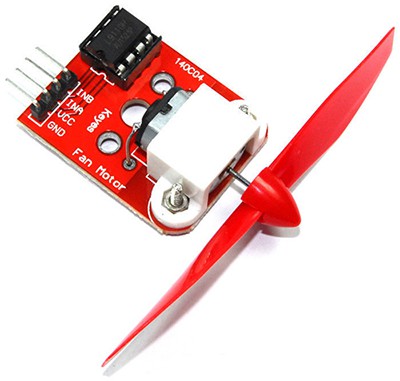
The labelling on the input pins can be a bit confusing, but it’s like this:
- GND: Ground Rail/0V
- VCC: Positive Rail/5V (recommended)
- INA: Motor Input A
- INB: Motor Input B
The schematic of the fan motor module (drawn by me) is very simple. There’s one logic table on the extreme right that’s worth a closer look!
According to the L9110 datasheet, a voltage of 2.5V minimum (5V typical) on the input pins is considered as a HIGH(H) level, so both Arduino as well as Raspberry Pi microcontroller can be used with this fan motor module.

Now to one thing that needs to be taken into account:
As you can see in the above schematic, the input points (INA & INB) are hardwired to the positive rail (VCC) of the fan motor module through a couple of 10KΩ pull-up resistors. Therefore, both of the inputs are at a logic-high(H) level by default, and this puts the motor in stop mode (note that the driver chip does not have a motor brake mode).
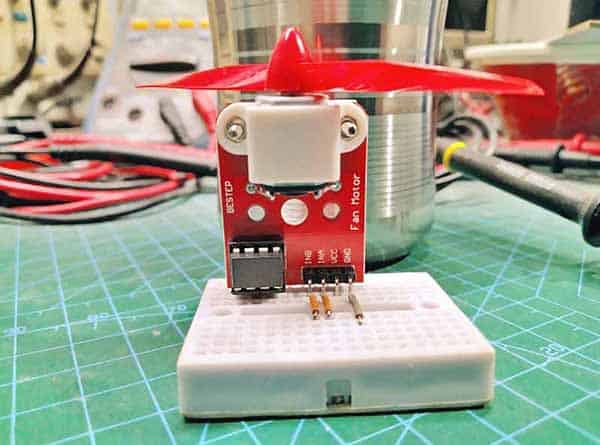
As a result, only a regular “Centre OFF” changeover switch (ON-OFF-ON) is needed to operate the propeller forward and in reverse directions as desired. A bit convenient in fact – if you want to try it yourself, the scheme below will suffice!
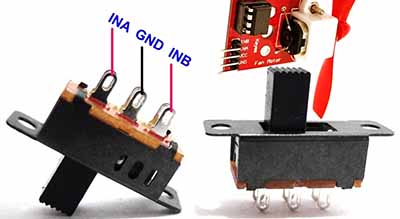
The fan motor module itself is breadboard friendly as it features a single connector (male header) with 0.1″ pin spacing. So, I did a quick test of my fan motor module using a mini breadboard as shown below. This is not so pretty, I know!
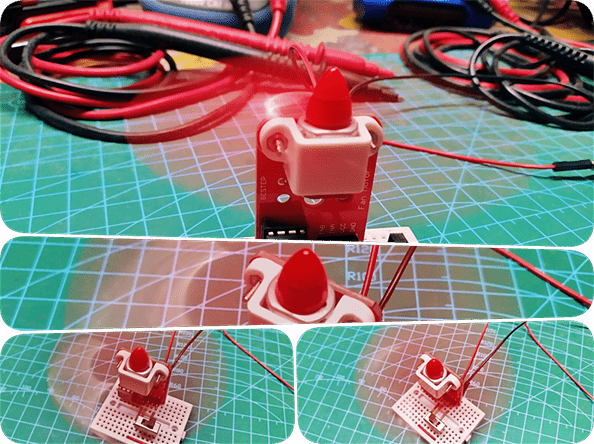
It’s noticed that the fan motor module draws current close to 200mA when powered by a well-regulated 5VDC power source. And, its peak current consumption (whilst the motor starts) is approximately 350mA.
For this post I bought something so you don’t have to. To be honest, I picked this somewhat funny fan motor module by chance. According to my seller’s claim, we can build an air aerial propeller vessel, an automatic cooling system, a spinning machine, or a firefighter robot with this small fan motor module. With a mind-blowing claim like that I just had to gather one but I must concede that I’ve no clear idea what I will do with it!

Anyway, I hope I shared something more about a fancy fan motor module through this post. Also, a crude idea was demonstrated to make it work without the use of a microcontroller. I do not stop here. Maybe after a while I’ll try to implement a real-world application of this compact fan motor module. You can do it too. Keep creating and inspiring!

